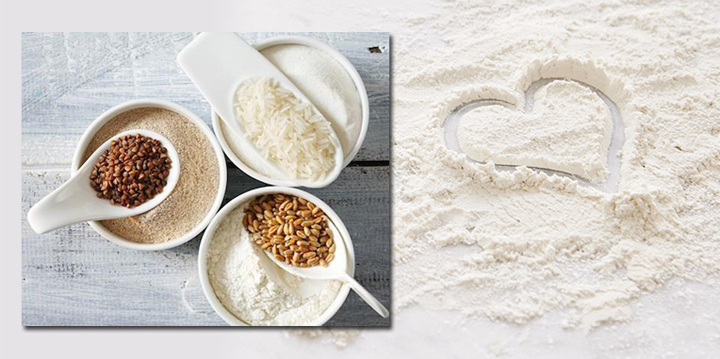Which are the types of gluten-free flour on the market?

In the contemporary world a growing number of people develop intolerance to gluten but on the other hand it is easier to find gluten-free products. Avoiding consumption of foods that contain gluten doesn’t mean you have to give up bakery products at all. To make a bakery product from gluten-free flour might seem quite difficult at first sight – it is certainly different from the traditional preparation you are used to. You have already seen different types of gluten-free flour on the shelves in the shops and if you feel confused you can use our short guide which we hope you will find useful. We will hardly be able to list all the types of gluten-free flour but we will try to provide information for the most popular ones.
Almond flour
Almond flour is obtained by very fine grinding of almonds. You can easily make it at home but be careful – if you grind the almonds too fine you will get almond butter.
Substitution: Almond flour can fully substitute the wheat flour but some recipes need a few more eggs so that the mixture becomes smooth. Baked goods with almond flour usually become denser. Besides you might feel the taste and aroma of almonds in them which is probably not so bad.
Advantages: Almonds are a source of healthy fats. They are also relatively high in protein and low in carbohydrates.
Coconut flour
Coconut flour is made from the dried fruit of the coconut which is then degreased and ground. It bears the slight aroma of a coconut which you can cover up with stronger flavours such as chocolate for example. As the process of preparation is specific you will certainly find difference in the types of coconut flour you will find on the market. So do not give up right away with the first try but look for the brand which will suit your needs and tastes in the best way.
Substitution: Coconut flour is incredibly absorbing. You can use it to replace wheat flour in the ratio of 1:4. That is one cup of wheat flour equals to a quarter of a cup of coconut flour.
Advantages: Coconut flour is rich in fiber and also is a great source of healthy fats. Compared with other types of flour, coconut flour has moderate protein content and low carbohydrate content.
Rice flour
Overview: The neutral taste of this flour makes it an excellent substitute for the wheat flour. Baked goods always become great in both looks and taste. Like lots of other types of gluten-free flour the rice flour can also be used as a thickener.
Substitution: It’s best to use rice flour in combination with other types of gluten-free flour.
Advantages: One of the main advantages of rice flour is that it is an excellent source of fiber.
Buckwheat flour
Overview: Buckwheat is especially rich in fiber and protein. Perhaps for this reason the buckwheat flour quickly turned into one of the favourite types of gluten-free flour for lots of people. Baked goods made from it have soft, almost walnut taste. Similar to the almond flour, the buckwheat flour thickens the mixture so it would better be mixed with lighter types of flour.
Substitution: You can totally substitute the wheat flour with buckwheat one when you prepare your favourite recipes. Unfortunately your baked goods will not be able to rise well, so you should mix the buckwheat flour with other types of gluten-free flour.
Advantages: High content of protein and fiber. Buckwheat flour is also rich in iron, calcium, magnesium and potassium.












LEAVE A COMMENT :
Comments sort : Newest / Oldest / Most Upvoted